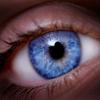I also wonder about... Chamomile
CHAMOMILE (MATRICARIA CHAMOMILLA)
CHAMOMILE’s mechanism of action in relation to its ANXIOLYTIC effects appears to involve both GABA RECEPTOR AGONISM and weak GABA TRANSAMINASE INHIBITION; and as such, prolonged usage will to an extent induce a down-regulation of the GABA RECEPTORS
Therefore, prolonged usage of CHAMOMILE for the medium to long-term should be avoided; and usage should be restricted to short-term usage and/or CYCLING ON/OFF
See the following:
Phytotherapy Res. 1996;10:177–179.
Benzodiazepine-like compounds and GABA in flower heads of Matricaria chamomilla.
Avallone, R.; Zanoli, P.; Corsi, L.; Cannazza, G.; Baraldi, M.
Source
Department of Pharmaceutical Sciences, Modena University, Via Campi 183, 41110 Modena (Italy)
-----------------------------------------------------------------------------------------------------------------------------------------
Planta Med. 1995 Jun;61(3):213-6.
Apigenin, a component of Matricaria recutita [and Matricaria chamomilla] flowers, is a central benzodiazepine receptors-ligand with anxiolytic effects.
Viola H, Wasowski C, Levi de Stein M, Wolfman C, Silveira R, Dajas F, Medina JH, Paladini AC.
Source
Instituto de Biología Celular, Facultad de Medicina, Buenos Aires, Argentina.
Abstract
The dried flower heads of Matricaria recutita L. (Asteraceae) are used in folk medicine to prepare a spasmolytic and sedative tea. Our fractionation of the aqueous extract of this plant led to the detection of several fractions with significant affinity for the central benzodiazepine receptor and to the isolation and identification of 5,7,4'-trihydroxyflavone (apigenin) in one of them. Apigenin competitively inhibited the binding of flunitrazepam with a Ki of 4 microM and had no effect on muscarinic receptors, alpha 1-adrenoceptors, and on the binding of muscimol to GABAA receptors. Apigenin had a clear anxiolytic activity in mice in the elevated plusmaze without evidencing sedation or muscle relaxant effects at doses similar to those used for classical benzodiazepines and no anticonvulsant action was detected. However, a 10-fold increase in dosage produced a mild sedative effect since a 26% reduction in ambulatory locomotor activity and a 35% decrement in hole-board parameters were evident. The results reported in this paper demonstrate that apigenin is a ligand for the central benzodiazepine receptors exerting anxiolytic and slight sedative effects but not being anticonvulsant or myorelaxant.
PMID: 7617761
-----------------------------------------------------------------------------------------------------------------------------------------
Canadian Journal of Physiology and Pharmacology, Volume 85, Number 9, September 2007 , pp. 933-942(10)
Effects of traditionally used anxiolytic botanicals on enzymes of the γ-aminobutyric acid (GABA) system
Awad, R.; Levac, D.; Cybulska, P.; Merali, Z.; Trudeau, V.L.; Arnason, J.T.
Source
NRC Research Press.
Abstract
In Canada, the use of botanical natural health products (NHPs) for anxiety disorders is on the rise, and a critical evaluation of their safety and efficacy is required. The purpose of this study was to determine whether commercially available botanicals directly affect the primary brain enzymes responsible for γ-aminobutyric acid (GABA) metabolism. Anxiolytic plants may interact with either glutamic acid decarboxylase (GAD) or GABA transaminase (GABA-T) and ultimately influence brain GABA levels and neurotransmission. Two in vitro rat brain homogenate assays were developed to determine the inhibitory concentrations (IC50) of aqueous and ethanolic plant extracts. Approximately 70% of all extracts that were tested showed little or no inhibitory effect (IC50 values greater than 1mg/mL) and are therefore unlikely to affect GABA metabolism as tested. The aqueous extract of Melissa officinalis (lemon balm) exhibited the greatest inhibition of GABA-T activity (IC50 = 0.35mg/mL). Extracts from Centella asiatica (gotu kola) and Valeriana officinalis (valerian) stimulated GAD activity by over 40% at a dose of 1mg/mL. On the other hand, both Matricaria recutita (German chamomile) and Humulus lupulus (hops) showed significant inhibition of GAD activity (0.11-0.65mg/mL). Several of these species may therefore warrant further pharmacological investigation. The relation between enzyme activity and possible in vivo mode of action is discussed.


















































